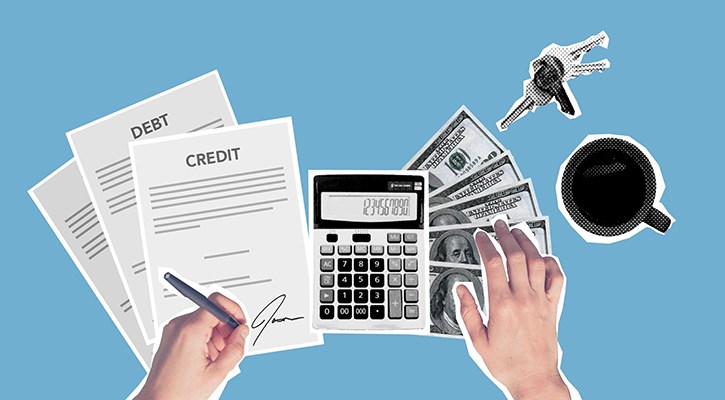
There are thousands of mortgage deals available, and even if you’re not new to property purchase, understanding all of the options can be a daunting prospect.
There are lots of variables to consider in working out what will be right for you, but if you can get to grips with the basics, you’ll rapidly be able to narrow the field and assess your best bets. So, let’s start with a look at the different shapes a mortgage can take.
Repayment or Interest Only?
The majority of mortgages these days, and certainly all those open to new buyers, are repayment mortgages. These involve paying back a bit of the sum you borrowed each month, as well as the interest due on the loan, so they can be pretty crippling if you’re on a tight budget.
However, at the end of the term (historically 25 years, although mortgages that last for 30 or 35 years are also available these days) you’ve cleared your debt completely and the property’s truly yours.
Interest-only mortgages are just that: your monthly payments only cover the interest on the loan and there is a separate plan to repay the capital. These mortgages have clear attractions as monthly payments are much lower and you have flexibility in regard to capital repayment.
However, these products fell out of favour after the housing market crash of 2007/08; many interest-only borrowers had no repayment plan as they had been relying on their property price rising to cover the payment. As a result, they risked a shortfall when capital repayment was due at the end of the term.
These days, interest-only loans are less easily accessed. Availability can be limited to higher net worth borrowers and may involve a minimum annual household income requirement (Barclays, for instance, stipulates £100,000, or £75,000 for sole buyers).
Lenders also cap loan-to-value (LTV) levels on these mortgages, so you need either a sizeable deposit or level of equity in your property to be eligible. Typically, the LTV must be 75% or lower (i.e. if the property costs £100,000 you can borrow a maximum of £75,000), says David Hollingworth, director of communications at L&C Mortgages.
You’ll also need to show you have a repayment plan, which could be a savings scheme such as a stocks and shares Isa or pension, or the sale of the property itself. In the latter case, the lender requires a minimum level of equity in the property as a buffer against the risk of market falls, Hollingworth adds.
Fixed or Variable Interest Rate?
The Bank of England’s base rates is at a record low and that means the mortgage market is offering very competitive rates. The question is whether you want the security of a fixed-rate product. These days, most borrowers choose a fixed-rate mortgage because rates are so low that any changes to mortgage rates are more likely to be up than down. The appeal of a fixed rate mortgage is that you know exactly what your monthly repayment as long as the deal lasts. Indeed, says Hollingworth, borrowers are also tending towards longer deals to lock in low monthly payments for as long as possible. “Five-year fixes are now as popular as two-year deals,” he points out.
If you take a variable rate mortgage, meanwhile, the amount you pay each month could vary, so you have to be willing and able to cope with possible fluctuations in outgoings. Lenders set a Standard Variable Rate (SVR) as their base, and it’s this rate you’ll move back onto at the end of any deal period. Importantly, while SVRs will likely move if the Bank of England alters the base rate, the lender can change its SVR at any time and by whatever margin it wants.
Discounted mortgage deals involve a discount on the lender’s SVR for a set period. They can be some of the cheapest deals around, but they do involve that element of uncertainty. And Tracker deals follow the bank base rate (plus a set percentage) and are therefore unaffected by changes in the lender’s SVR but will rise and fall in line with any changes to the Bank of England’s base rate.
Regardless of which type of mortgage you want, the deals available to you will always be limited by the size of deposit. If you have a 40% deposit (i.e. 60% LTV) you’ll get access to lower rates, as the lender takes on less risk. However, LTV deals of up to 90% or 95% have become increasingly common, particularly with first-time buyers.
Don't Forget About Fees
Another consideration in choosing a mortgage is the associated fees on the product. The costs of setting up a mortgage can vary from nothing to as much as £2,000, and fees tend to be inversely linked to a deal’s interest rate – so a mortgages costing say £1,500 will likely have relatively low interest rates, while the rate on a sister deal with zero fees is perhaps 0.5% higher.
Lenders offer a range of combinations of rate, length of deal and charges for each type of mortgage; the cheapest option overall for you will probably depend on the value of your loan. Free online mortgage calculators can help you work out the total cost of the deal including fees and repayments over the period.
A higher fee and lower interest rate, for example, may work out better value over a longer deal. There may be other financial incentives to take into account too, such as free valuations or cashback.
How to Choose?
Now you need to consider how long a deal will suit you best. These days, it’s possible to find fixed deals for 10 or even 15 years, and while the low rates attached to these are tempting, they can be inflexible if you need to move or borrow more, for example.
“You can normally move your existing mortgage to a new home, but that doesn’t always work if your circumstances have changed,” says Hollingworth. “In that event you’d need to repay the mortgage early – which would involve a penalty charge – and go to a different lender.”
Finally, as we’ve seen, you need to look at the total cost across the whole deal period in weighing up the balance between interest rates and fees. It’s not straightforward, and you may well find a mortgage broker can help you nail the best arrangement for your situation.





























